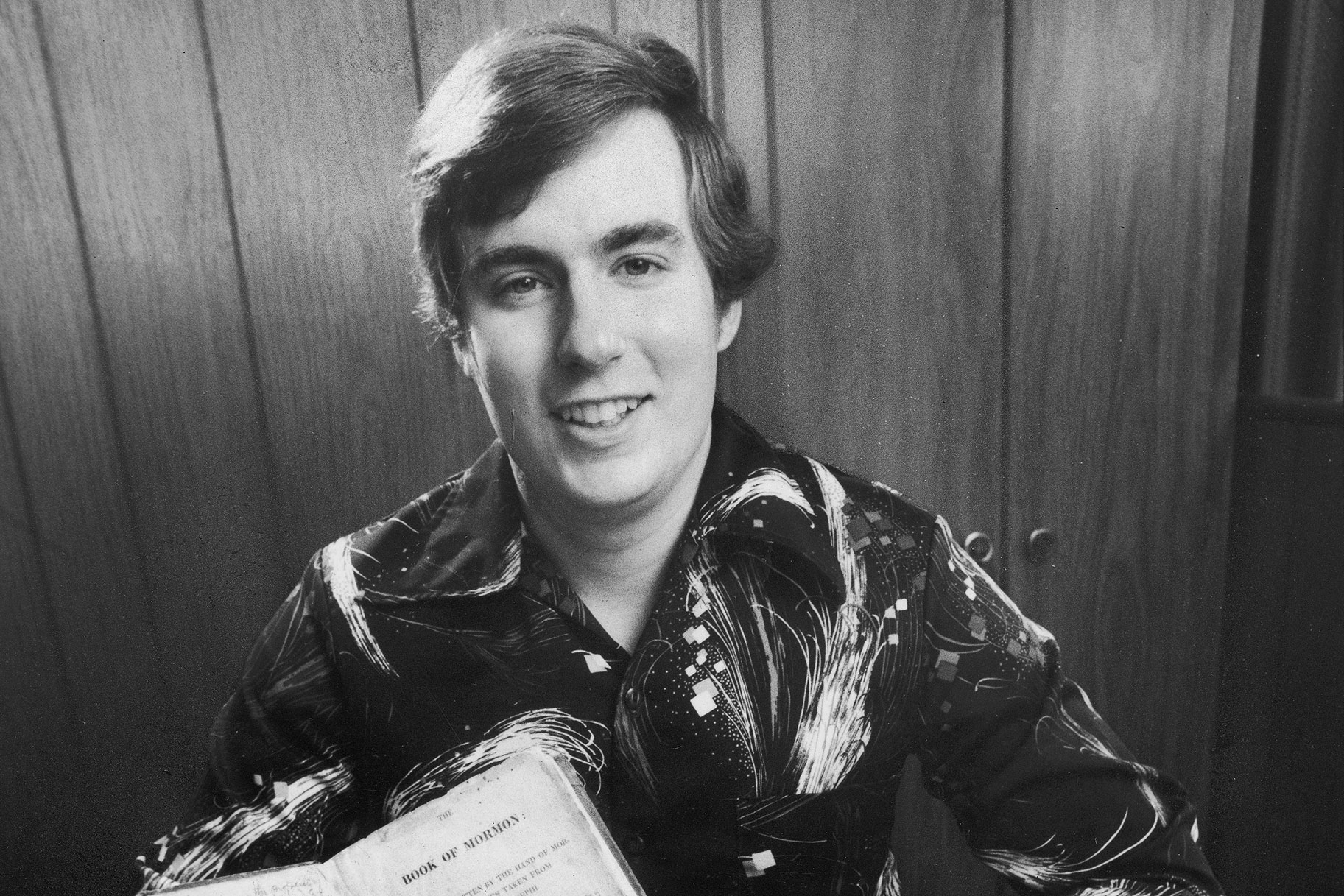Create a free profile to get unlimited access to exclusive videos, breaking news, sweepstakes, and more!
Who Is Mark Hofmann, The Mormon Bomber Who Killed To Conceal His Counterfeit Scheme?
Mark Hofmann’s facade as a sweet religious man crumbled in 1986 when he was slapped with multiple charges for crimes, including murder.

Long before an infamous Utah Mormon man’s reputation turned from lovable nerd to deadly bomber, he had spent much of his life engaged in secret crimes, which ultimately brought his downfall after he committed murder in order to cover his tracks.
Mark Hofmann’s facade as a sweet religious man crumbled in 1986 when he was slapped with multiple charges for crimes from one year prior, including first-degree murder, delivering a bomb, and constructing or possessing a bomb for a series of bombings.
(Warning: show spoilers ahead.)
The Salt Lake City man constructed and deployed a pair of pipe bombs, which killed two people on Oct. 15, 1985. Steven F. Christensen, a 30-year-old businessman, was killed when one bomb, filled with nails, detonated at his office in downtown Salt Lake City after it was delivered by Hofmann inside a parcel. Just hours later, Kathleen Sheets, 50, the wife of Christensen’s former business associate, died after another bomb went off at their nearby home.
The following day, Hofmann accidentally blew up his own sports car while carrying around another bomb. He was seriously injured in the blast but survived and eventually admitted to being the culprit behind the two attacks. That 1986 confession shocked members of the local community, who generally saw Hofmann as good-natured, nerdy, and a whiz at finding authentic historical documents.
It turns out the truth about Hofmann’s so-called talent for sniffing out such documents was his motivation to kill. His skills were a scam — and a financially lucrative one — and the bombings were a ploy to avoid detection.
Hofmann had counterfeited multiple documents, including one that became known as the “White Salamander Letter” — an artifact that supposedly would shake the very foundations of Mormonism. The letter, purportedly written by Martin Harris, an early disciple of Church of Jesus Christ of Latter-day Saints founder Joseph Smith, recounts that a spirit in the form of a white salamander appeared to Smith at the time he discovered the "gold plates," which the church maintains contained hieroglyphics that Smith would translate into the Book of Mormon. This contradicted teachings known to the faith, which maintained that Smith had been visited by an angel. The implication of Hofmann's letter was that the founding of the Mormon church was intertwined with folk magic, a radical departure from the religion's foundational teachings, as Netflix’s new docuseries “Murder Among the Mormons” details.
However, this wasn’t the only document that Hofmann had forged. In fact, he’d made his career out of creating false documents, including an “unknown” Emily Dickinson poem, and documents supposedly featuring Mark Twain and George Washington’s signatures, Deseret News reported in 2005. Before his cover was blown following the explosions, Time magazine had published a feature on Hofmann, celebrating him for finding another long-lost document of The Church of Jesus Christ of Latter-day Saints regarding the authenticity of the sacred gold plates.
The motive behind the forgeries was financial. Hofmann sold his counterfeit documents to the church or collectors and eventually began soliciting cash from investors to fund his purchases of rare artifacts. This led to Hofmann incurring significant debts as some of the sales of his forgeries failed to materialize. The operation essentially morphed into a Ponzi scheme. Hofmann would promise investors a nice return, sometimes up to 100 percent, on rare documents, Deseret News reported. When an investor would fall for the proposal and fork over their cash, Hofmann would use their money to repay investors to whom he already owed money.
Over the years, Hofmann kept digging himself into a deeper and deeper hole of debt and bounced checks, all while living a lavish lifestyle of travel and fast cars as he had his sights set on a big payday. As the docuseries points out, he was hoping the Library of Congress would pay him over $1 million for his fraudulent "Oath of a Freeman" document, supposedly the first printed in Britain's American colonies, from the 1630s. But the deal never panned out.
Hofmann was also hoping to receive a large amount of money for the "McLellin Collection" – a trove of documents purportedly written by early Mormon leader William E. McLellin. It was another fraudulent set of documents that could have had devastating effects on the church, just like the "White Salamander Letter." Christensen was considering buying the collection, and Hofmann was supposed to deliver it to him the morning of the bombings.
In the end, it’s believed that Hofmann resorted to murder to prevent his scheme from being uncovered. It’s also possible, as the New York Times reported in 1985, that Christensen may have discovered that the "White Salamander Letter" and possibly the "McLellin Collection" were forged.
Still, Hofmann’s forged documents were originally viewed as authentic and hundreds were on display in libraries and churches. Some went undetected for years. The LDS has found at least 446 forgeries attributed to Hofmann in its collection, Deseret News reported in 2002.
"I think we are going to be discovering stuff Mark Hofmann did for years to come," Utah's history director Philip F. Notarianni noted in 2010 after the scammer was connected to even more forgeries.
Throughout his life, Hofmann was drawn to both collecting and fraud. As Deseret News reported in 2017, he began collecting coins and altering them to make them appear to be rarer when he was a child. By the time he was 14, he had created an almost undetectable forgery technique.
By 1980, he was a pro scammer.
Hofmann was 32 years old in 1986 when he pleaded guilty to the trio of charges stemming from the bombings. He was sentenced to life in prison.
Two years later, he attempted suicide while behind bars. He survived, but ended up with tissue damage to his right arm. His attempt to end his life came shortly after his wife and mother of his four children, Doralee Olds Hofmann, filed for divorce, citing "irreconcilable differences." Years later, in 2005, she told the Deseret News that she’d had no idea of her husband’s career in fraud; whenever she questioned elements that didn’t add up, he always had the perfect answer she noted.
Hofmann is currently incarcerated at Central Utah Correctional Facility, where he is expected to remain until his death.


























